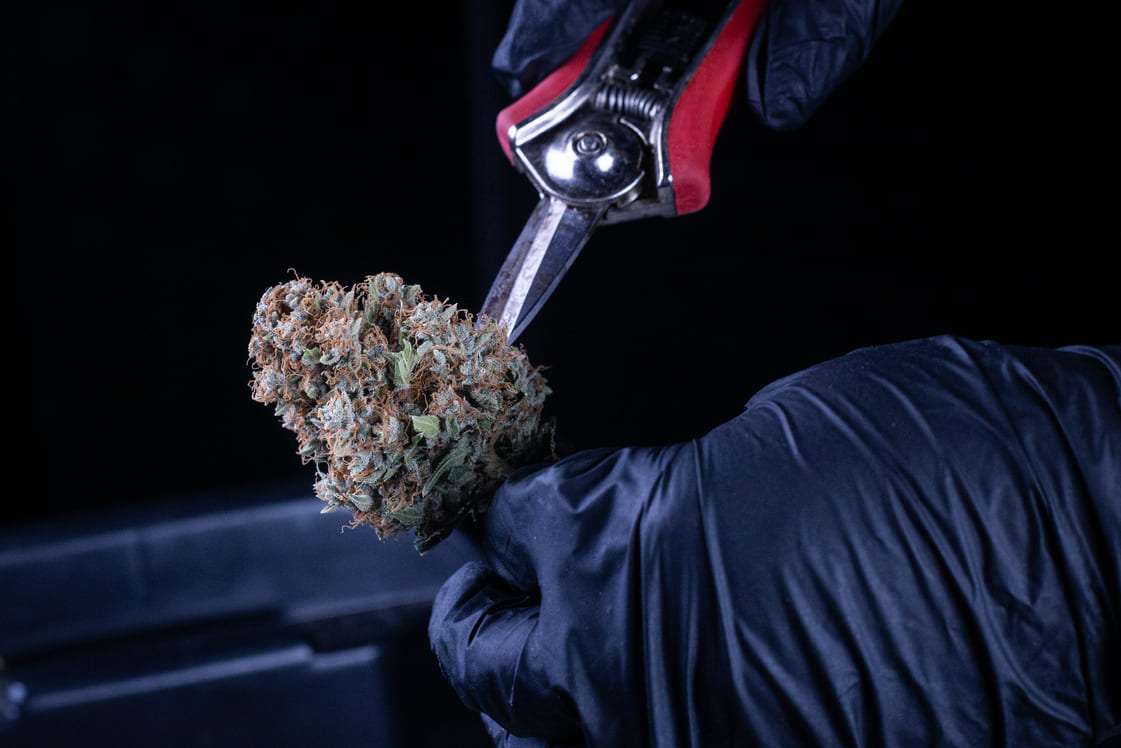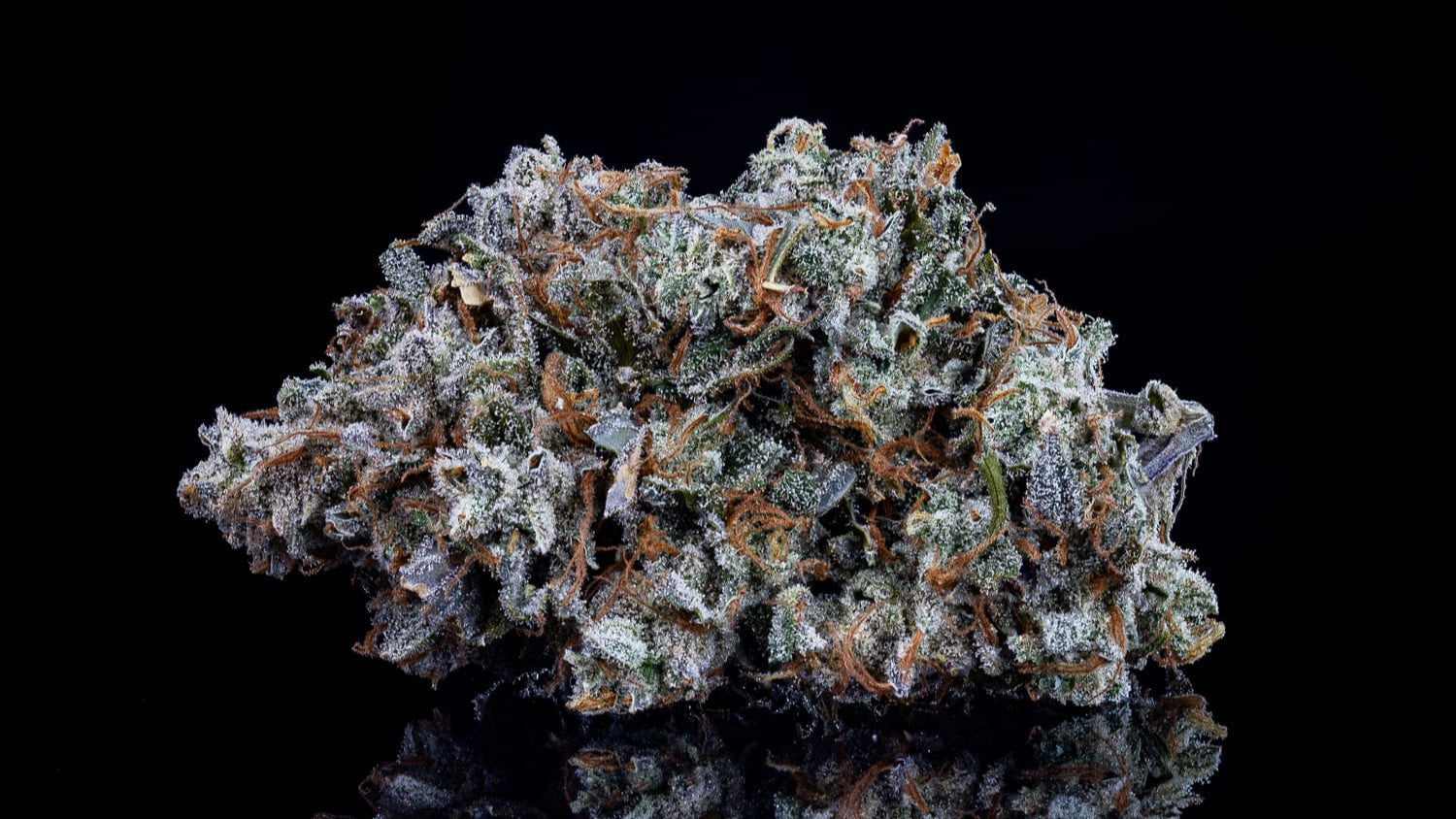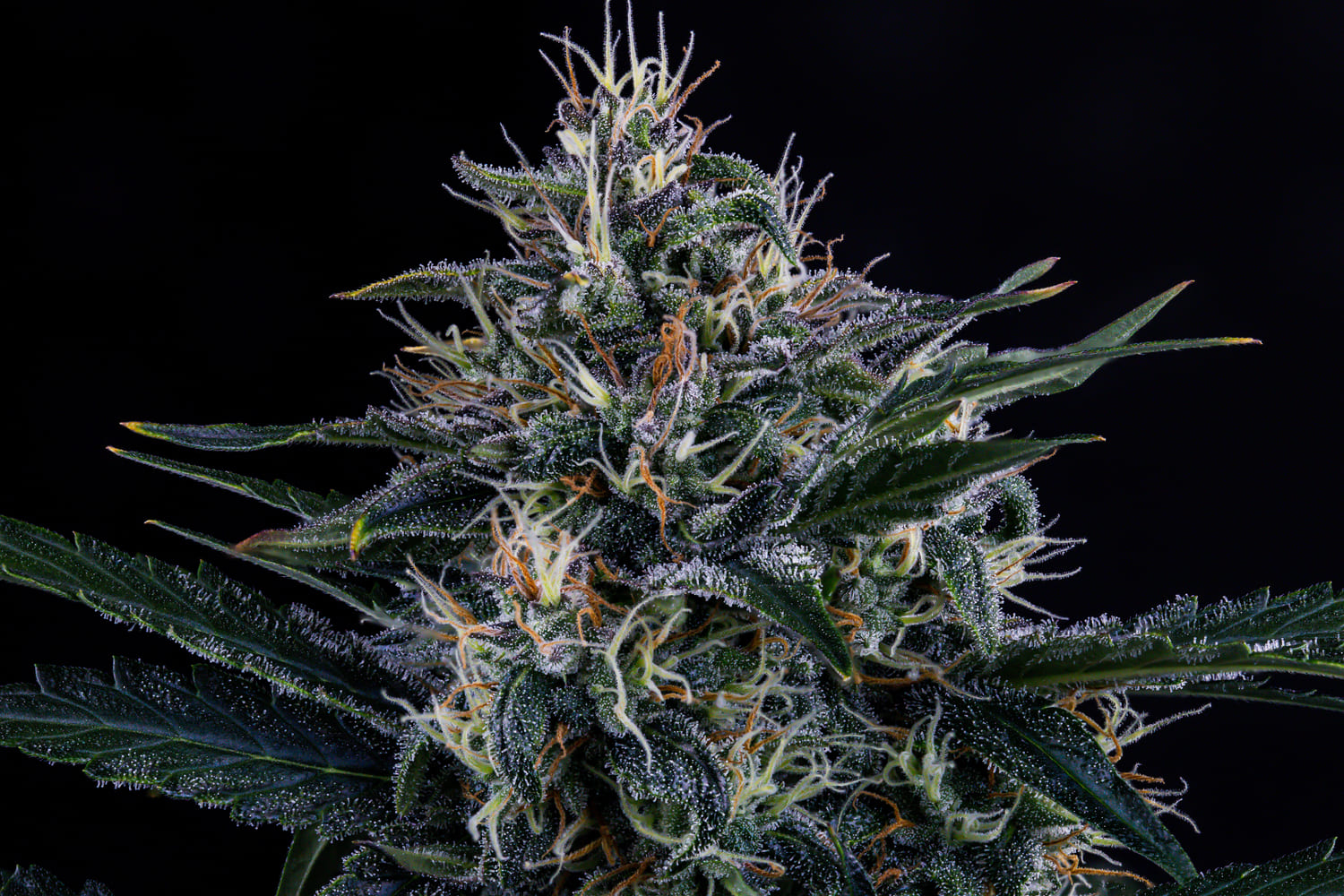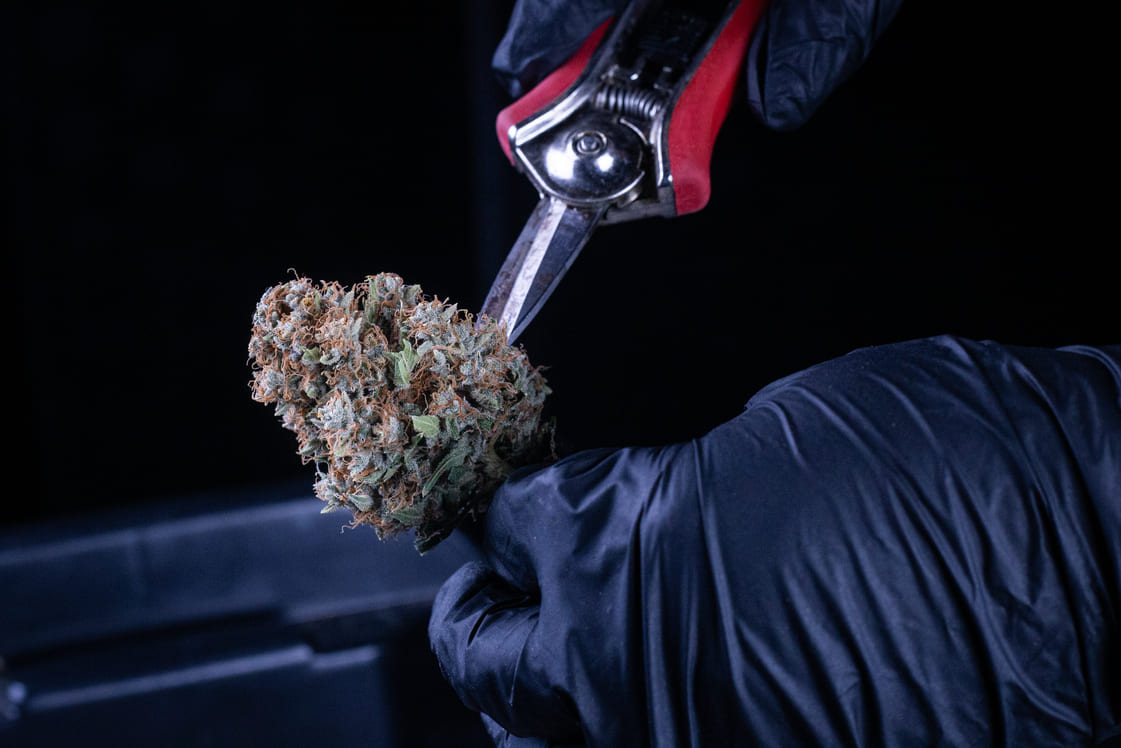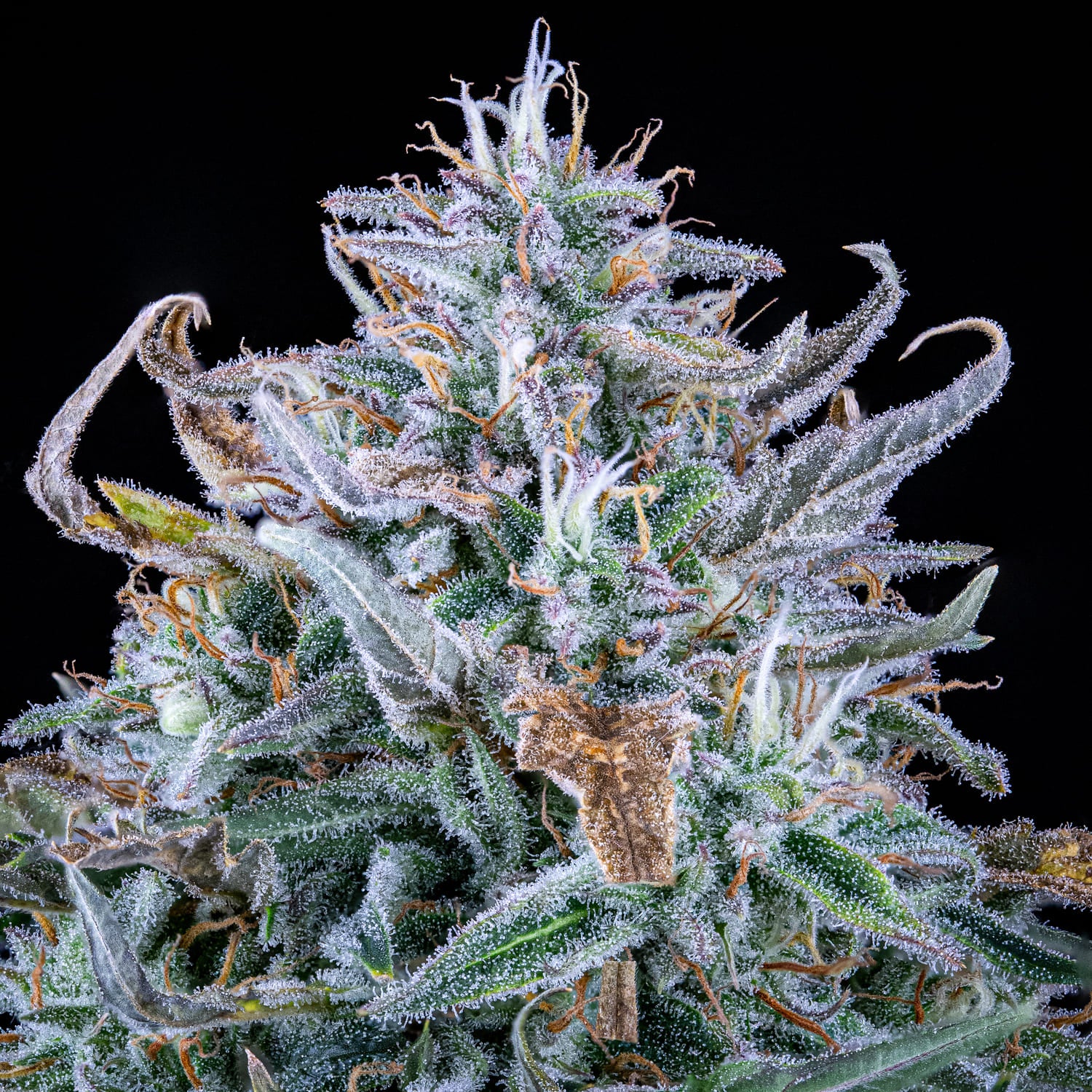Check out Jimbo's video above for all of your visual learners out there!
Welcome to the third installment of our autoflower Low Stress Training (LST) series. In our first two parts, we discussed the benefits of leaf tucking and defoliation. Both of these methods can help to shape autoflowers as well as direct light and airflow to their lower canopies. As a continuation of these two training techniques, it's time to discuss methods that can be used to tie down and give support to autoflowers as they develop. Support can mean anything from offering a seedling a stake to lean on to using tomato cages and SCROG nets for taming large plants (and even entire canopies). There are a variety of tools out there to use in the quest to tie down and support growing autoflowers. Let’s go over a few and discuss the various benefits and techniques you can employ in your garden.
Why Tie Down and Support Autoflowers?
Plant ties and support options can be invaluable tools in your autoflower garden. They come in a variety of types, and can even be fashioned out of common household objects. Popular tie options include yoyo string, twisty ties, soft garden ties, twine, and garden wire. Plant clips are another common alternative to ties, with many companies designing products specifically catered to cannabis and autoflowers specifically. Alternatively, there are all kinds of common support options out there as well. These include Bamboo or plastic garden stakes, PVC pipe, and even tomato cages. Larger wooden stakes are also commonly used for outdoor plants. Having a tie on hand can come in handy at almost any stage in an autoflower life cycle. Here are a few common uses for plant ties:
- Supporting Heavy Branches -
Many of our larger varieties such as ManBearAlienPig or HubbaBubbaSmelloscope can grow very large. As they enter the final stages of growth, these hearty giants produce massive towering colas that can often cause their support branches to bend and buckle under the added weight. Situations like this are great for using plant ties. One thing to consider is that ties used in this scenario may require a hard point. For larger plants, this may be a more sturdy branch above the one you are tying. It could also be the meristem if the plant has the strength. Stakes, cages, and other support may also be added in to create hard points higher in the canopy, specifically for droopy colas.
- Supporting Seedlings -
Every so often you’ll get a leggy seedling. Perhaps it needed just a bit more light. Sometimes a first set of leaves will cause a seedling to become top-heavy, causing it to droop over. A common fix to this is to use a plant tie and a small stake (chopsticks work great). Make sure not to tie the seedling itself as it could damage the stem as it develops. In some cases, you may be able to use a small stake as a crutch without any ties.
- Canopy Management -
When it comes to LST, the sky is the limit. Sometimes that limit is a shallow tent in a small space as well. Plant ties and support are a great option to utilize when managing canopy size. Tying branches down as they grow can have a number of effects on the plant's growth pattern. For instance, tying (or staking down) the main stem down below the plant’s side branches will cause the growth hormones (auxins) to redistribute across the canopy. Those hormones would have originally supplied the growth of the main stem only. Getting those auxins to the side branches encourages a more even growth across the canopy and can even create better nutrient pathways. Many attribute this to increased yields. Ties can also be used to open up densely foliaged plants to allow better light and airflow within.
- Environmental Support -
Shoutout to our outdoor Meph-Heads! Plant ties and support systems can be a make-or-break decision for those facing the elements. Wind, rain, and even snow can plague the outdoor grower, and even the strongest and sturdiest autoflowers can only take so much before folding in. The advantage to using these systems outdoors is that when used proactively, plants can grow into their support systems and cages, requiring less maintenance down the road for growers. Common preexisting gardening options make for great alternatives, especially for outdoor growers. Tomato cages and plastic garden stakes are inexpensive and commonly available in most garden supply centers. This applies to outdoor gardening twine as well as twist ties and even zip ties (great for when in a pinch!).
Tips for Using Ties and Support With Autoflowers
- Be Proactive -
Try to establish a game plan before tying plants down. Make sure you arm yourself with plant ties and support options ahead of time. If you plan on using tomato cages or more intricate contraptions for plant support, you’ll want to preinstall those. It can be difficult to lay down a tomato cage later into the autoflower’s life cycle. You’ll risk damaging branches in most cases.
- Establish Anchor Points -
Know where you will anchor your plant ties if you plan to use them. There are a bunch of great container options, and in most cases, both hard plastic and fabric containers will have some DIY solution for an anchor point. Many growers drill holes in the rims of their plastic pots and fabrics can be sewed into. Plant ties can also be buried underneath the soil and faceted to the pot bases ahead of planting.
- Start Slow and Practice Caution-
Never tie down a plant too quickly, practice patience and let plants adjust at their own place. Some autos will respond well to being tied down, while others will be more stubborn and could snap if overextended. A good practice is to lightly pinch and slowly bend your stems, testing for flexibility before establishing a tie down and anchor point. Tie plants down at an angle to avoid breaking stems. Make sure never to tie a branch too tight or for too long.
- Monitor Your Work-
Even with shorter life cycles, autoflowers can take time to shape. Come back regularly and monitor your tie points. Make adjustments periodically to accommodate the growth pattern of your plant. You may have to adjust tie-downs daily as plants begin to transition.
In Part 4 of our Autoflower LST Series, We will cover Trellising and Scrogging for canopy management!
Jimbo, signing out!
related strains.
related blogs.
Check out these other blog articles.
